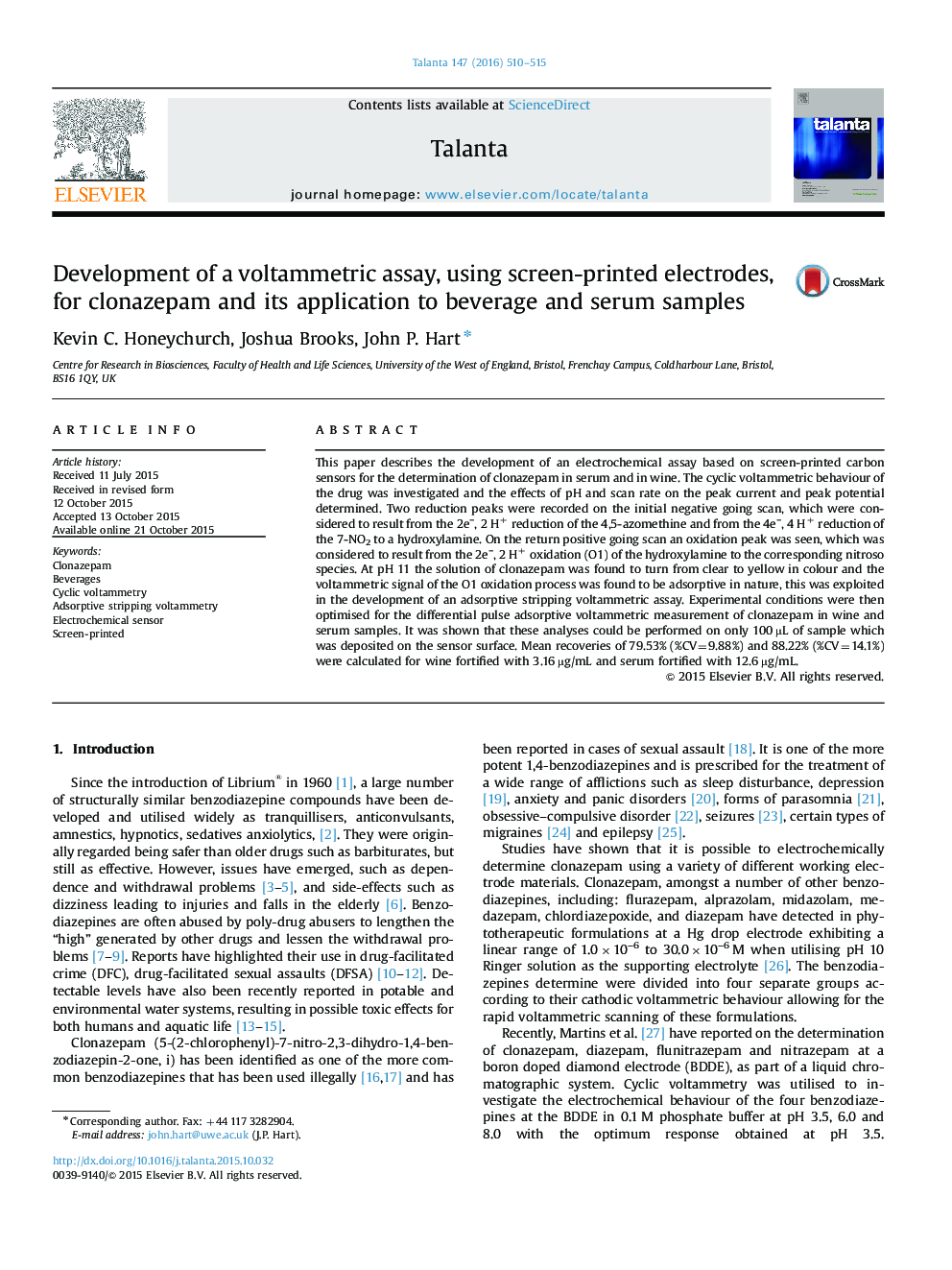| Article ID | Journal | Published Year | Pages | File Type |
|---|---|---|---|---|
| 1242788 | Talanta | 2016 | 6 Pages |
•Clonazepam electrochemistry can be exploited using screen-printed carbon electrodes.•The hydroxylamine oxidation reaction facilitates analysis in real samples.•An adsorption process was involved in the measure step.•Low detection limits were achievable in serum and wine.
This paper describes the development of an electrochemical assay based on screen-printed carbon sensors for the determination of clonazepam in serum and in wine. The cyclic voltammetric behaviour of the drug was investigated and the effects of pH and scan rate on the peak current and peak potential determined. Two reduction peaks were recorded on the initial negative going scan, which were considered to result from the 2e–, 2 H+ reduction of the 4,5-azomethine and from the 4e–, 4 H+ reduction of the 7-NO2 to a hydroxylamine. On the return positive going scan an oxidation peak was seen, which was considered to result from the 2e–, 2 H+ oxidation (O1) of the hydroxylamine to the corresponding nitroso species. At pH 11 the solution of clonazepam was found to turn from clear to yellow in colour and the voltammetric signal of the O1 oxidation process was found to be adsorptive in nature, this was exploited in the development of an adsorptive stripping voltammetric assay. Experimental conditions were then optimised for the differential pulse adsorptive voltammetric measurement of clonazepam in wine and serum samples. It was shown that these analyses could be performed on only 100 µL of sample which was deposited on the sensor surface. Mean recoveries of 79.53% (%CV=9.88%) and 88.22% (%CV=14.1%) were calculated for wine fortified with 3.16 µg/mL and serum fortified with 12.6 µg/mL.
Graphical abstractFigure optionsDownload full-size imageDownload as PowerPoint slide
